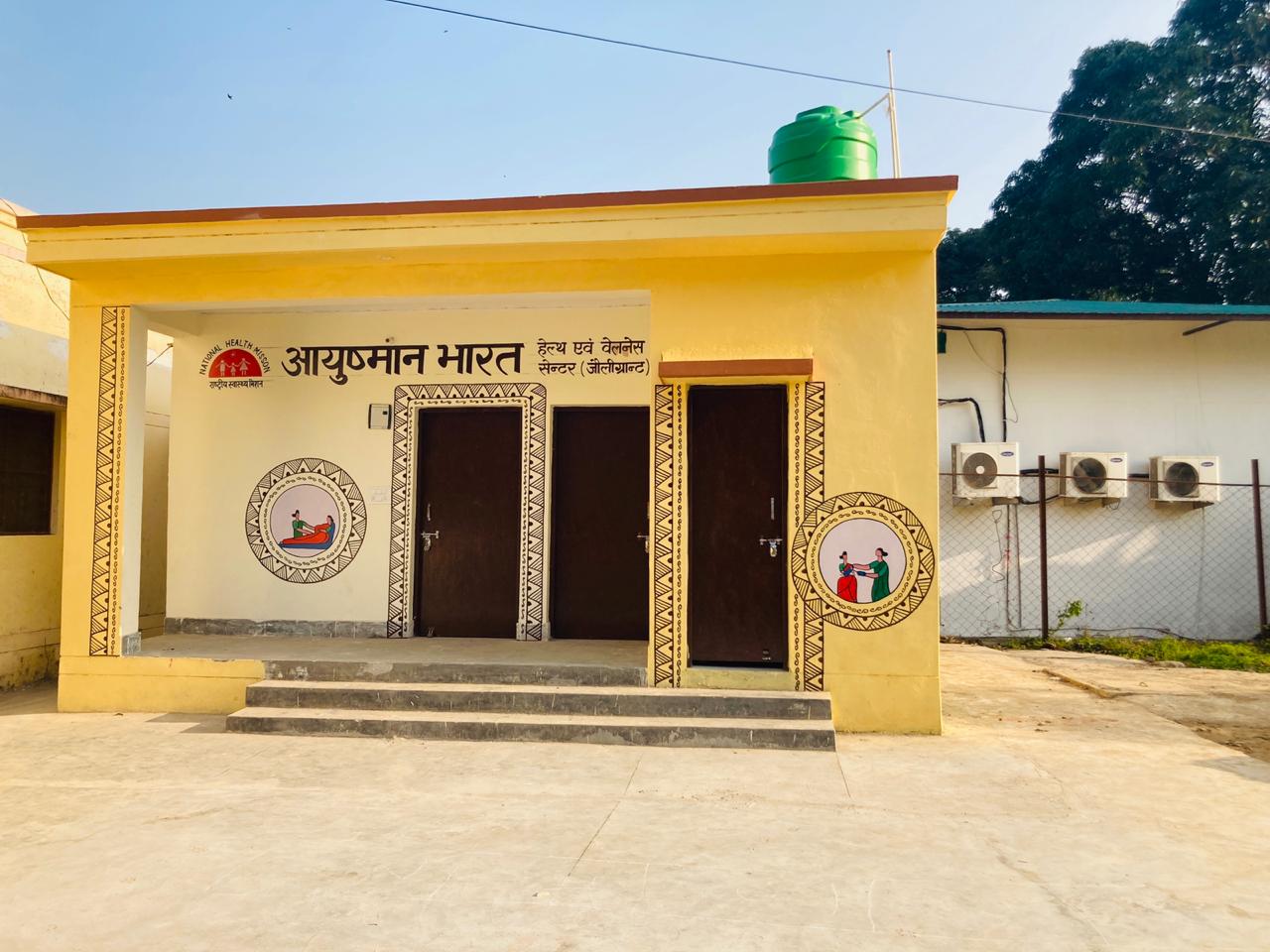Doctors, public health experts express concern over the name change and ask whether these are health centres or religious places.
Published Nov 28, 2023 | 8:00 AM ⚊ Updated Nov 28, 2023 | 8:00 AM

An Ayushman Bharat Health and Wellness Centre. (Official website)
The Union government’s recent order to rename over 1.61 lakh Health and Wellness Centres (HWCs) as “Ayushman Arogya Mandir” has irked several people in the health fraternity.
This decision, which includes the tagline “Arogyam Paramam Dhanam”, is being questioned for its potential implications on inclusivity, secularism, and the politicisation of public health.
Speaking to South First, Dr KR Antony, public health professional, questioned the rationale behind renaming the healthcare facilities.
“How does the supposed revolution in rural healthcare emerge from changing ‘Arogya Kendra’ to ‘Arogya Mandir’? The functionality remains the same for Health and Wellness Centres. Is the insertion of the word ‘mandir’ in everything supposed to evoke a sense of wellness?” he inquired.
The Union Health Ministry’s directive, released on 25 November, mandated state health secretaries to implement the renaming with specific guidelines on format, font, and size.
The directive stated, “To realise the dream of Ayushman India, the competent authority has decided to rename the Ayushman Bharat Health and Wellness Centres as ‘AYUSHMAN AROGYA MANDIR’ with the tagline ‘Arogyam Parmam Dhanam’.”
The directive asked the states to rename all sub health centres (SHCs), primary health centres (PHCs), urban primary health centres (UPHCs), urban health and wellness centre (UHWCs) with this name written both in English and Hindi, respectively. The specific font and size were also mentioned.
Interestingly, it said that if any script other than Devnagri/English has to be used for branding, then the full and exact title can be translated in state languages, but the tagline has to be transliterated in the state language. The deadline given by the government to do the same is 31 December.
This move, involving an approximate expenditure of close to ₹50 crore, has sparked widespread debate and raised several crucial questions.
Public health experts and doctors have first of all questioned the very intent of renaming. They call the exercise “futile and unnecessary”.
Dr Arun Gupta, Convenor, Nutrition Advocacy in Public Interest (NAPi), and paediatrician, told South First, “Renaming, branding will cost around ₹48 crore. I wonder how it will ensure or improve India being ‘healthy’ if public money is spent on name change,” he said.
Experts argued that the HWCs have established their identity and have been functioning effectively in recent years. The rationale behind altering a successfully established identity at this stage remains unclear.
“If the government can share one health advantage of changing the name to ‘Mandir’, I will look forward to it. More importantly, why and how this decision was taken needs to be made public,” he argued.
Stakeholders are questioning the wisdom of altering this identity, which could potentially disrupt the continuity and recognition these centres have achieved.
The very use of the term “mandir” is being questioned. Dr Gupta pointed out that the term “mandir”, even as per Wikipedia, refers to a place where Hindus go to worship in the form of various deities.
“Is the government leaving health to the gods? What if people go for worship, looking for deities, thinking it’s a ‘mandir’? Will our Constitution permit such a renaming? What about gurudwara, church or masjid?” he asked.
The experts raised concerns about the appropriateness of religious symbolism in public health facilities. This move has sparked a debate on whether public healthcare should be associated with religious connotations.
It also brings to light concerns about whether individuals belonging to religions like Islam, Christianity, or Buddhism will feel comfortable accessing services in a facility named “mandir”, a term intimately linked with Hinduism.
Weighing in, Dr Antony said, “I saw the substantial change in districts of Chhindwara (Madhya Pradesh) and Bishnupur (Manipur) in the appointment of young BSc Nursing staff, as CHO (Community Health Officer) was fully available for clinical consulting. Also, availability of drugs, especially for hypertension, diabetes, and cardioprotective drugs at the HWC — even lab testing.”
“Community members here have now started calling it as ‘Hamara Hospital’. So, now, patients become bhakts of the mandir and the deva is the CHO to offer puja?” he asked.
In a country like India, comparing a health centre to a temple might not sit well with people from different faiths.
The experts felt that the new name could potentially affect the ease of acess and comfort level of people from minority religions, especially in areas where the term “mandir” is not culturally relevant. This is particularly pertinent in regions with predominantly Muslim or Sikh populations.
Meanwhile, some public health experts even wondered if it is a “political strategy” as the timing is just ahead of the 2024 general elections.
This could potentially allow the ruling BJP and the prime minister to claim exclusive credit for the management of these public health facitilities, despite them being under state governments, one of the experts said.
They also argued that this renaming is in contrast to Article 15 of the Indian Constitution, which explicitly lay down that the state should not discriminate against any citizen based on religion, race, caste, sex, place of birth, or similar grounds.
